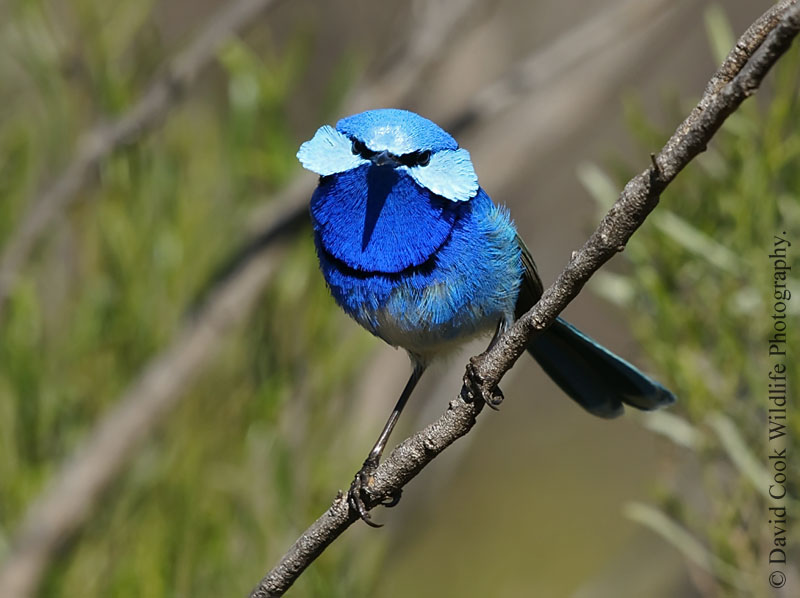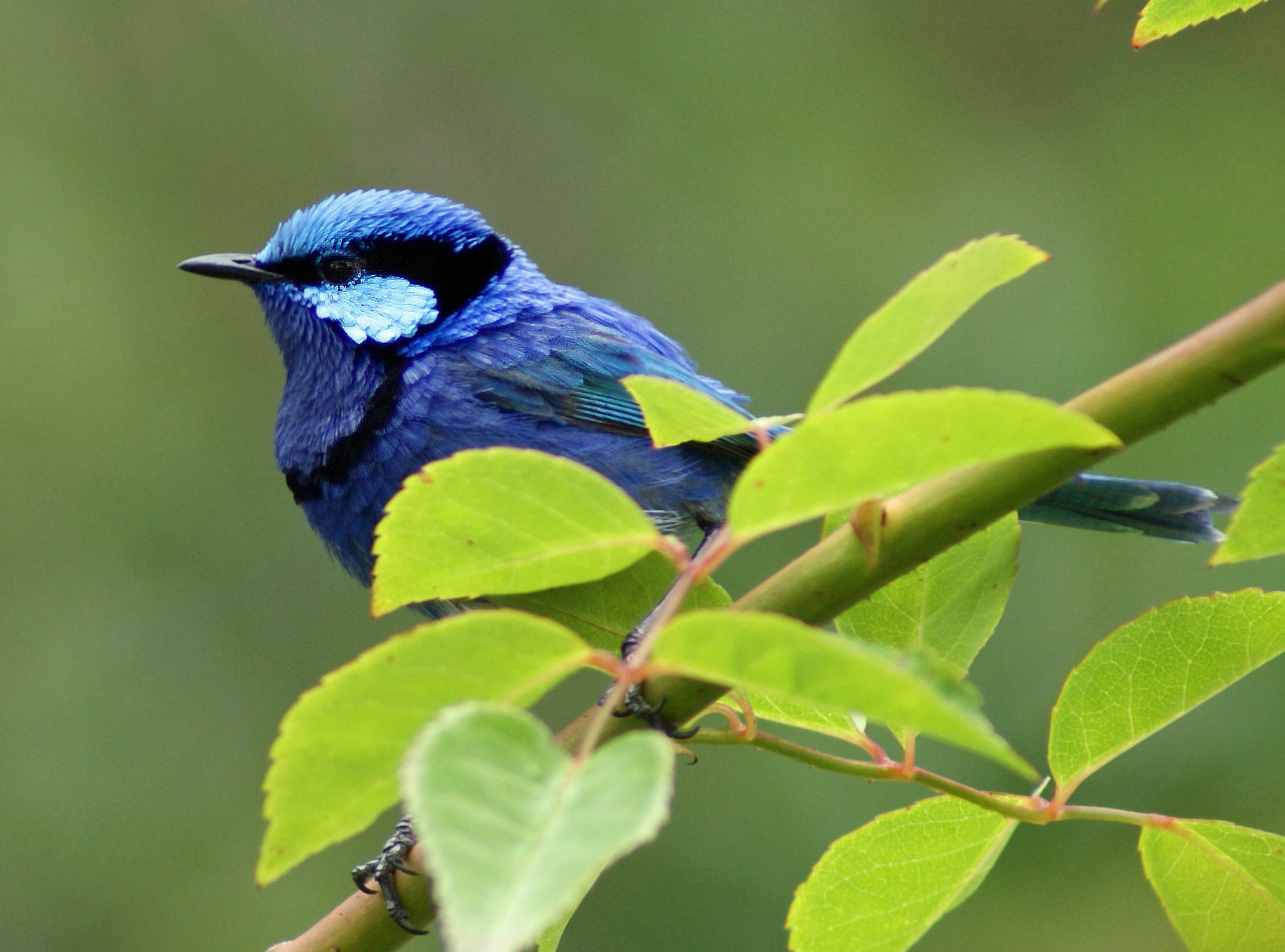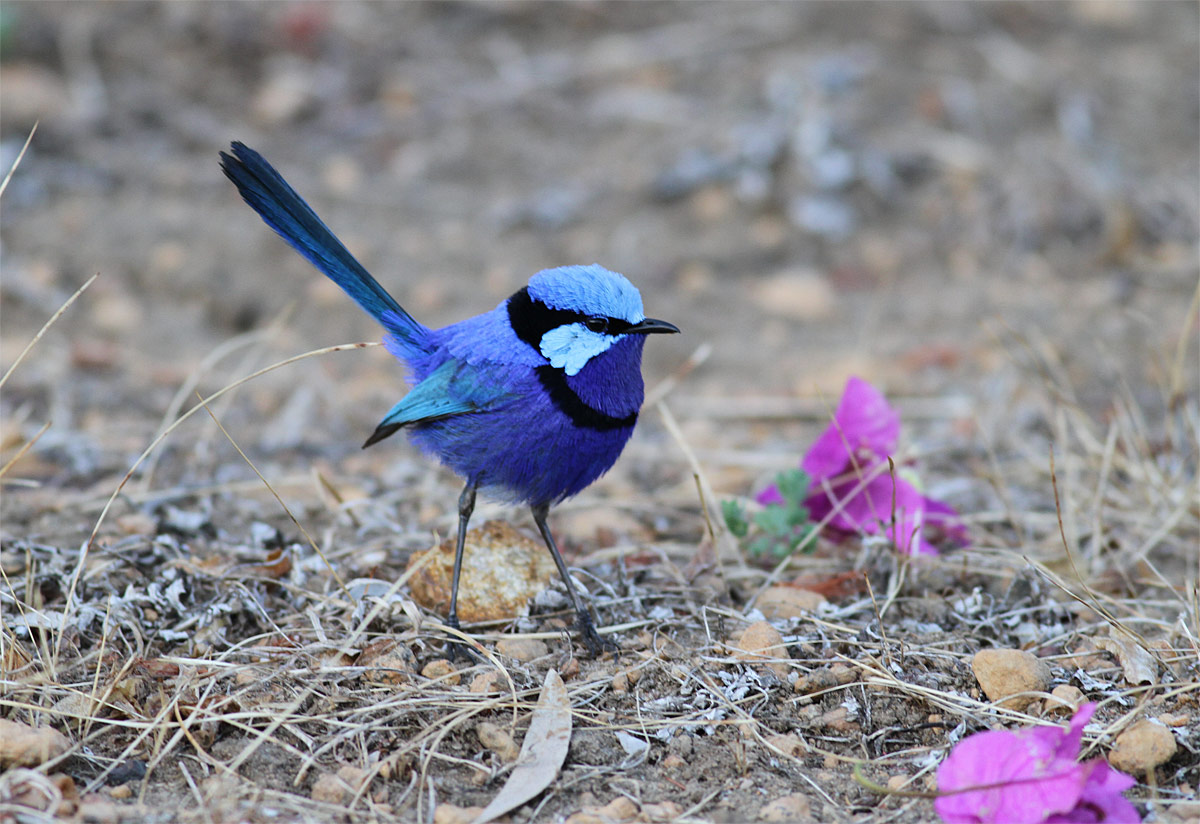
Malurus splendens
TAXONOMY
Malurus splendens Quoy and Gaimard, 1830, King George
Sound, Western Australia. Four subspecies.
OTHER COMMON NAMES
English: Splendid wren; French: Mйrion splendide; German:
Tьrkisstaffelschwanz; Spanish: Ratona Australiana Franjeada.
PHYSICAL CHARACTERISTICS
5.5 in (14 cm); female 0.27–0.36 oz (7.6–10.2 g), male
0.28–0.39 oz (7.9–11.1 g). Male in breeding plumage is brilliant
blue with turquoise cheek patches and crown, black
breast, face, and back markings. Nonbreeding males, females,
and immatures drab olive above with blue tails and wings.
DISTRIBUTION
Populations scattered across Australia: M. s. splendens in the
west, M. s. musgravi in the interior, M. s. emmottorum in
Queensland, and M. s. melanotus in the east.
HABITAT
Mostly drier acacia woodlands and scrublands, including
mulga, mallee, and saltbrush.
BEHAVIOR
Stronger fliers than most fairy-wrens, and more versatile foragers,
often foraging in the canopy. A territorial, cooperative
breeder, usually found in small groups that defend their territory.
Voice a loud series of trills.
FEEDING ECOLOGY AND DIET
Insectivorous, mostly gleaning ants, grasshoppers, spiders, and
insect larvae from the ground, litter, and foliage up to canopy
height; also hop-search and pounce on prey, and may hawk flying
insects.
REPRODUCTIVE BIOLOGY
Socially monogamous, but promiscuous, with males wandering
into adjacent territories and often fathering less than half of
the offspring from their own territory. Clutch is two to four
red-spotted, white eggs. Female incubates for about two weeks,
and fledging occurs in 10–13 days.
CONSERVATION STATUS
Not threatened but adversely affected by habitat destruction
for agriculture and overgrazing.
SIGNIFICANCE TO HUMANS
None known.
Photo Gallery of - Splendid fairy-wren




 Animalia Life
Animalia Life